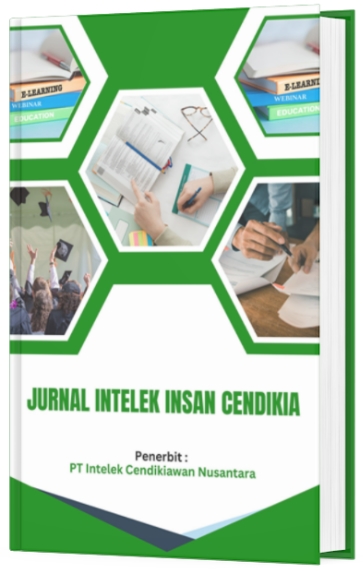TINJAUAN SISTEMATIS INSTAGRAM SEBAGAI ALAT UNTUK ELT
Keywords:
Instagram, ELT, social media in educationAbstract
Through an analysis of 18 articles published between 2015 and 2023, this systematic review investigates Instagram's use in English language teaching (ELT). It emphasizes how Instagram improves writing skills, aids identity formation, stimulates student interest, and promotes socially conscious teaching. Results indicate that Instagram provides a forum for reflective learning, boosts motivation, and enables genuine conversation. While it encourages individual and group expression, it also presents difficulties for digital literacy and instructional design. According to the review, when used pedagogically, Instagram can be a useful tool in contemporary ELT courses.
References
Droz-dit-Busset, O. (2022). “So-called influencers”: Stancetaking and (de)legitimation in mediatized discourse about social media influencers. Discourse, Context & Media, 49, 100629. https://doi.org/10.1016/j.dcm.2022.100629
Alaqlobi, O., Alduais, A., Qasem, F., & Alasmari, M. (2024). Artificial intelligence in applied (linguistics): A content analysis and future prospects. Cogent Arts & Humanities, 11(1), 2382422. https://doi.org/10.1080/23311983.2024.2382422
Barkhoda, J., Azizi, A., & Abdulrahman, B. S. (2025). Bridging worlds: Enhancing English teaching through a culture-based approach in Iranian Kurdistan. Cogent Education, 12(1), 2464308. https://doi.org/10.1080/2331186X.2025.2464308
Dirzyte, A., Perminas, A., Kaminskis, L., Žebrauskas, G., Sederevičiūtė–Pačiauskienė, Ž., Šliogerienė, J., Suchanova, J., Rimašiūtė–Knabikienė, R., Patapas, A., & Gajdosikiene, I. (2023). Factors contributing to dropping out of adults’ programming e-learning. Heliyon, 9, e22113. https://doi.org/10.1016/j.heliyon.2023.e22113
Kusuma, I. P. I. (2022). “Why this and not that social media?” Reasons for using technology during online practice teaching. The JALT CALL Journal, 18(2), 264–285. https://doi.org/10.29140/jaltcall.v18n2.593
Lee, J. S., Chen, J., & Drajati, N. A. (2024). Informal digital learning of English and perceptions of using EIL materials: Attitude toward varieties of English as a mediator. Journal of Multilingual and Multicultural Development, 45(5), 1762–1777. https://doi.org/10.1080/01434632.2021.2021213
Maretha, C., & Alrajafi, G. (2022). Fluent in English with social media platforms during the Covid-19 pandemic. ELT-Lectura: Studies and Perspectives in English Language Teaching, 9(1), 97–106.
Nematzadeh, A., & Narafshan, M. H. (2020). Construction and re-construction of identities: A study of learners’ personal and L2 identity. Cogent Psychology, 7(1), 1823635. https://doi.org/10.1080/23311908.2020.1823635
Raja, P., Setiyadi, A. B., & Riyantika, F. (2021). The correlation between perceptions on the use of online digital interactive media and reading comprehension ability. International Journal of English Language and Literature Studies, 10(4), 292–319. https://doi.org/10.18488/journal.23.2021.104.292.319
Thomas, K. (2020). Reading and writing activities on Instagram. In P. Clements, A. Krause, & R. Gentry (Eds.), Teacher efficacy, learner agency (pp. 472–479). JALT. https://doi.org/10.37546/JALTPCP2019-54
Wahyuningsih, S. (2021). Reviewing hate speech in Indonesian social media content: Gender and discourse perspectives. ELT-Lectura: Studies and Perspectives in English Language Teaching, 8(1), 49–56.
Banegas, D. L., Sacchi, F., San Martín, M. G., & Porto, M. (2024). Teachers’ and student teachers’ conceptualisations and enactment of social justice in English language teaching: A case in Argentinian secondary schools. Teachers and Teaching. Advance online publication. https://doi.org/10.1080/13540602.2024.2411957
Morady Moghaddam, M., & Esmaeilpour, F. (2023). Persuasive language in ELT-related ads on social media. Journal of Psycholinguistic Research, 52(5), 1263–1288. https://doi.org/10.1007/s10936-023-09942-7
Downloads
Published
Issue
Section
License
Copyright (c) 2025 Rafi Ahmad Fauzi fauzi, Muhammad Ali Isa Pena, Nafan Tarihoran

This work is licensed under a Creative Commons Attribution-ShareAlike 4.0 International License.













